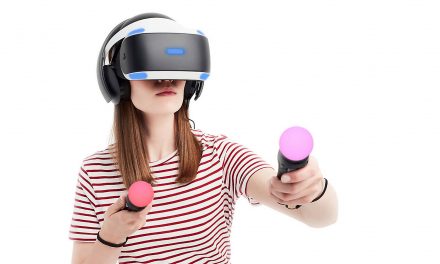At Oculus Connect 5 (OC5), CEO of Facebook Mark Zuckerberg announced the Oculus Santa Cruz project now has an official name: the Oculus Quest.
The head-mounted display (HMD) is considered a mid-point between the high fidelity PC-powered Oculus Rift and the consumer-friendly untethered Oculus Go, which has made strides recently impacting the enterprise training sector, with large retailers like Walmart scaling their VR experience to more than a million employees.

OC5 Attendees Playing “Dead and Buried” on Oculus Quest. Image credit: Debra Davis
The Quest, capable of running “Rift-quality experiences,” according to Zuckerberg, will ship Spring 2019 and cost $399. More than 50 titles will be available for Quest at launch, and it will offer mixed reality (MR) support and SDKs for Unreal Engine 4 and Unity.
The Quest will ship with two Rift-compatible touch controllers that offer “hand presence,” according to Hugo Barra, VP of VR at Oculus. Like the Go, it will be wireless and share similar optics, but will include improved built-in 360 degree audio with “deeper bass,” and offer 6 degrees of freedom (6DoF).
“With the upcoming untethered 6DoF capabilities, audiences will want to leave behind passive experiences,” said Colum Slevin, Head of Experiences at Oculus. “This gives us a responsibility and capability to create more engaged experiences…developers have complete liberty to roam and turn freely without worrying [about where the cord is].”
The tracking that makes 6DoF possible will be handled by Oculus Insight, a proprietary system comprised of four, ultra-wide angle sensors built directly into the HMD that scan the environment and support “arena-sized” experiences, according to Barra. As for safety, Insight features a Multi-Room Guardian, which remembers room layouts allowing users to move from room to room without fear of running into anything.
“The Oculus Quest could be the game changer for VR in the corporate space,” said Myra Roldan, Senior Instructional Designer at Amazon, “In a corporate space this means that, for example in training, additional data can be gathered regarding a users interactions in a virtual training environment and used to improve processes and create efficiencies in a number of workflows…the Oculus Quest is definitely a great leap in the right direction.”
As far as known technical specifications, the Quest is powered by Qualcomm’s Snapdragon 835 processor. While this is not the most recent processor from Qualcomm (that being the 845 in this year’s Samsung Galaxy S9), it is a step up from the 821 inside of the Go. The Quest also sports 1600 x 1440 resolution per eye (the same as the Go), with the only storage option being 64 GB, though this is subject to change
“With Oculus Quest,” said Zuckerberg when referring to the Go, Rift, and Quest, “We will be able to complete our first generation of Oculus products.”
Sources






